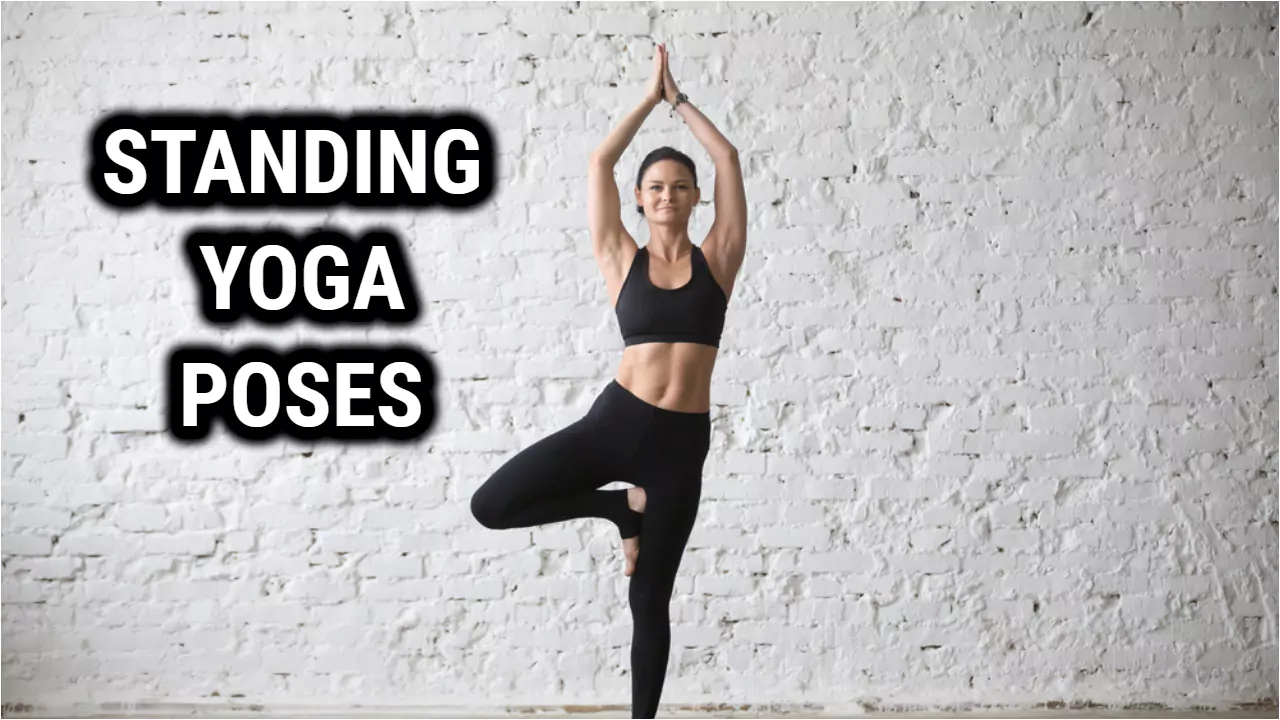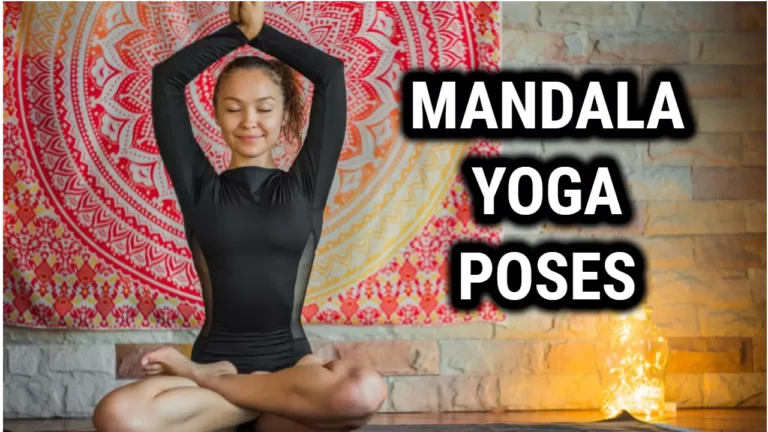Standing Yoga Poses: Improve Balance and Flexibility with These Simple Moves

Standing yoga poses are a fundamental part of any yoga practice. These poses involve standing on one or both feet while engaging various muscles and focusing on balance and stability. They offer numerous physical and mental benefits, including improved posture, increased strength and flexibility, and reduced stress and anxiety.
There are many different types of standing yoga poses, ranging from simple and gentle to more challenging and advanced. Some of the most popular standing poses include Mountain Pose, Tree Pose, Warrior I and II, and Triangle Pose. Each pose offers unique benefits and can be modified to suit different levels of experience and ability.
Whether you are a seasoned yogi or a beginner, incorporating standing yoga poses into your practice can help you build strength, improve balance, and deepen your mind-body connection. By focusing on your breath and staying present in the moment, you can cultivate a sense of calm and inner peace that can carry over into all aspects of your life.
Benefits of Standing Yoga Poses
Standing yoga poses offer numerous benefits to the body and mind. Here are some of the top benefits of practicing standing yoga poses:
- Improves balance: Standing yoga poses require you to engage your core muscles and focus your attention, improving your balance over time.
- Builds strength: Holding standing yoga poses for several breaths can help build strength in your legs, core, and upper body.
- Increases flexibility: Practicing standing yoga poses can help improve your overall flexibility, making it easier to perform other yoga poses and movements.
- Boosts energy: Standing yoga poses are often energizing, making them a great way to start your day or to get a quick burst of energy in the middle of the day.
- Improves focus and concentration: The focus required to maintain balance in standing yoga poses can help improve your overall focus and concentration.
Additionally, standing yoga poses can help improve your posture, reduce stress and anxiety, and increase body awareness.
Common Standing Yoga Poses
Standing Yoga Poses are an essential part of any yoga practice. They help to build strength, increase flexibility, and improve balance. Below are some of the most common Standing Yoga Poses:
| Poses | Description |
|---|---|
| Tadasana (Mountain Pose) | Stand with your feet together, pressing evenly through all four corners of your feet. Engage your thighs and lift your kneecaps. Lengthen your tailbone towards the floor and lift the crown of your head towards the ceiling. |
| Vrksasana (Tree Pose) | Start in Tadasana. Shift your weight onto your left foot, bend your right knee and place the sole of your right foot on your left inner thigh. Press your foot into your thigh and your thigh into your foot. Bring your hands to your heart center or reach them overhead. |
| Utthita Trikonasana (Extended Triangle Pose) | Start with your feet wide apart. Turn your left foot in slightly and your right foot out 90 degrees. Reach your right arm forward and then down towards your right shin, ankle, or the floor. Reach your left arm up towards the ceiling. Keep your legs engaged and press into both feet. |
Additional standing yoga poses
- Warrior I (Virabhadrasana I)
- Standing Forward Bend (Uttanasana)
- Half Moon Pose (Ardha Chandrasana)
- Warrior II (Virabhadrasana II)
- Triangle Pose (Trikonasana)
- Revolved Triangle Pose (Parivrtta Trikonasana)
- Side Angle Pose (Parsvakonasana)
These poses are just a few of the many Standing Yoga Poses that you can incorporate into your yoga practice. Remember to always listen to your body and modify the poses as needed. With regular practice, you will build strength, increase flexibility, and improve your overall balance.
How to Practice Standing Yoga Poses
Standing yoga poses are excellent for building strength, improving balance and stability, and grounding your energy. Here are some tips to help you practice them safely and effectively:
- Start with a warm-up: Before practicing standing yoga poses, it’s important to warm up your body with some gentle stretches and movements. This can include cat-cow, downward dog, and sun salutations.
- Engage your core: To maintain stability and protect your lower back, it’s important to engage your core muscles throughout your practice. This can involve drawing your navel in towards your spine and lifting your pelvic floor.
- Ground your feet: In standing yoga poses, your feet are your foundation. Make sure to ground them firmly into the earth, spreading your toes and pressing down evenly through the four corners of each foot.
- Maintain proper alignment: To avoid injury and get the most benefit from each pose, it’s important to maintain proper alignment. This can involve keeping your knees in line with your ankles, stacking your joints, and lengthening your spine.
- Breathe deeply: Throughout your practice, focus on breathing deeply and evenly. This can help you stay present, calm, and focused.
Also Read: Top Benefits of Using a Yoga Strap in Your Practice – Improve Your Postures
Breath Control Techniques
Standing yoga poses are an integral part of any yoga practice. They involve balancing the body on two feet and focusing on breath control. Breath control is essential to any yoga practice, as it helps to deepen the concentration and create a sense of calmness throughout the entire body. Breath control techniques can be used to move through standing yoga poses with greater ease, while also providing numerous physical and mental benefits.
When practicing breath control in standing poses, it is important to focus on deep breathing exercises. By inhaling deeply and exhaling slowly, we can begin to open up our lungs and increase oxygen flow throughout our bodies. Deep breathing can help us become more aware of our posture, allowing us to make subtle adjustments for better alignment in our poses. When we engage in controlled breathing, we can also begin to reduce stress levels and improve overall wellbeing.
Breath control is an important aspect of yogic practice that should never be overlooked or taken for granted. With regular practice of deep breathing exercises during standing postures, we can start to reap the many rewards that come from a mindful yoga practice. Not only will we find it easier to hold postures longer but we will also start to feel calmer and more balanced inside ourselves. This improved sense of inner peace can then extend into other aspects of life, allowing us to live with greater joy and clarity each day.
Precautions and Tips
While standing yoga poses can be beneficial for improving balance, stability, and strength, it’s important to take certain precautions to avoid injury and get the most out of your practice. Here are some tips to keep in mind:
- Start slowly and gradually increase the intensity and duration of your practice.
- Listen to your body and don’t push yourself beyond your limits.
- Warm up before starting your practice to prevent injury.
- Use props such as blocks and straps to modify poses and make them more accessible.
- Breathe deeply and evenly throughout your practice to help calm your mind and stay focused.
In addition, if you have any pre-existing medical conditions or injuries, it’s important to consult with your healthcare provider before starting a yoga practice. They can help you determine which poses are safe for you and which ones you should avoid.
Finally, it’s important to remember that yoga is a personal practice and everyone’s body is different. Don’t compare yourself to others in your class or on social media, and focus on your own progress and growth.
Related Read: Bikram Yoga Poses: Unlock Your Inner Strength and Vitality
Conclusion
Standing yoga poses are an excellent way to improve your physical and mental health. Through practice of basic postures and movements, breath control techniques, and progression to advanced positions, we can begin to experience the many benefits that yoga has to offer.
It is important to keep safety in mind while engaging in any form of exercise and yoga is no exception. It is also essential to take into account any physical conditions you may have when selecting poses or postures as well as modifications which can be made for increased safety and comfort. Finally, combining standing yoga with other forms of exercise can help create ‘the perfect storm’ of optimal health – like two stars aligning.






